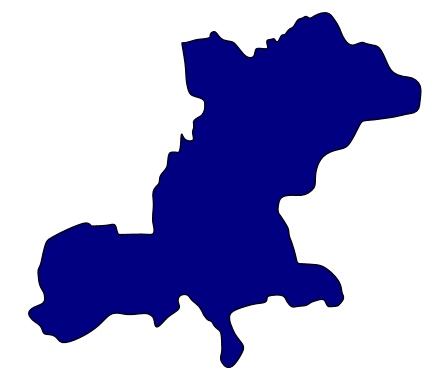Satara Jagirs - Akkalkot
After the death of Aurangzeb, Shatrapati Shambhaji's son Shahu was let go to Deccan but his claim to the throne was contested by Tarabai, the widow of Rajaram, Shambhaji's brother. One of her commanders who attacked Shahu was Sayaji Lokhande, the Patil of Parad whom Shahu defeated and killed. His widow surrendered to Shahu along with her three sons whom she placed at Shahu’s feet. Touched at their pitiable state, Shahu took the eldest son Ranoji with him and gave him the name Fatehsinh after a band under his nominal command dispersed a band of robbers. In 1712, he adopted Fatehsinh and granted him as jagir, Akkalkot which he received from Aurangzeb on his marriage to Ambikabai of the Sindhkhed line. Fatehsinh Bhonsle was an active Maratha commander, serving in Kolhapur in 1718, Bundelkhand in 1730 and in the Southern campaigns of Raghuji Bhonsle. On the death of Chatrapati Shahu in 1749, he retired to Akkalkot. Childless, he was succeeded by his nephew Shahaji whom he adopted five years before. Being directly related to the Satara family, Akkalkot reported directly to Satara and not to the Peshwas. Akalkot was a part of the army fielded for Udgir Campaign in 1760 and in 1764, against Hyder Ali of Mysore. In the Nizam's campaign which led to the Battle of Rakshasbhuvan, Akkalkot was completely overrun. After the death of Maloji in 1828, Satara took direct charge of the kingdom as regency till Shahaji came of age. Two years later, instigated by the Raja of Satara, Akkalkot saw a serious revolt which was quelled only by the bringing additional troops from Solapur. The Raja of Satara was replaced by a British officer as the regent. On the lapse of Satara in 1849, Akkalkot lapsed to British suzerainty. In 1866, Maloji was deposed for misrule and a regency was imposed till his death in 1870. The regency continued during the minority rule of Shahaji who was born in 1867. Akkalkot became the final resting place for Samarth Maharaj of the Datta Sect who took Samadhi in 1878 after spending two decades in Akkalkot and subsequently became a major pilgrimage centre for the Datta Sect from then on.
References
Census of India, 1941. Vol. III: Bombay Tables
Memoranda On The Indian States 1939
Nagpur Gazetteer
Akkalkot sansthanacha itihas 1707-1965 Santosh Pandurang Pawar
Solapur Gazetteer
Hind Rajasthan
Link to main article
Princely States of India
I have been thinking what topic to start writing over. Let me start with the Princely States of India. Over time, I will try to build a history or at least an introduction of every Princely State of India as of 1947. First of all, there is no clear information over the number of states which existed. Some of them like Jammu and Kashmir or Hyderabad were…






